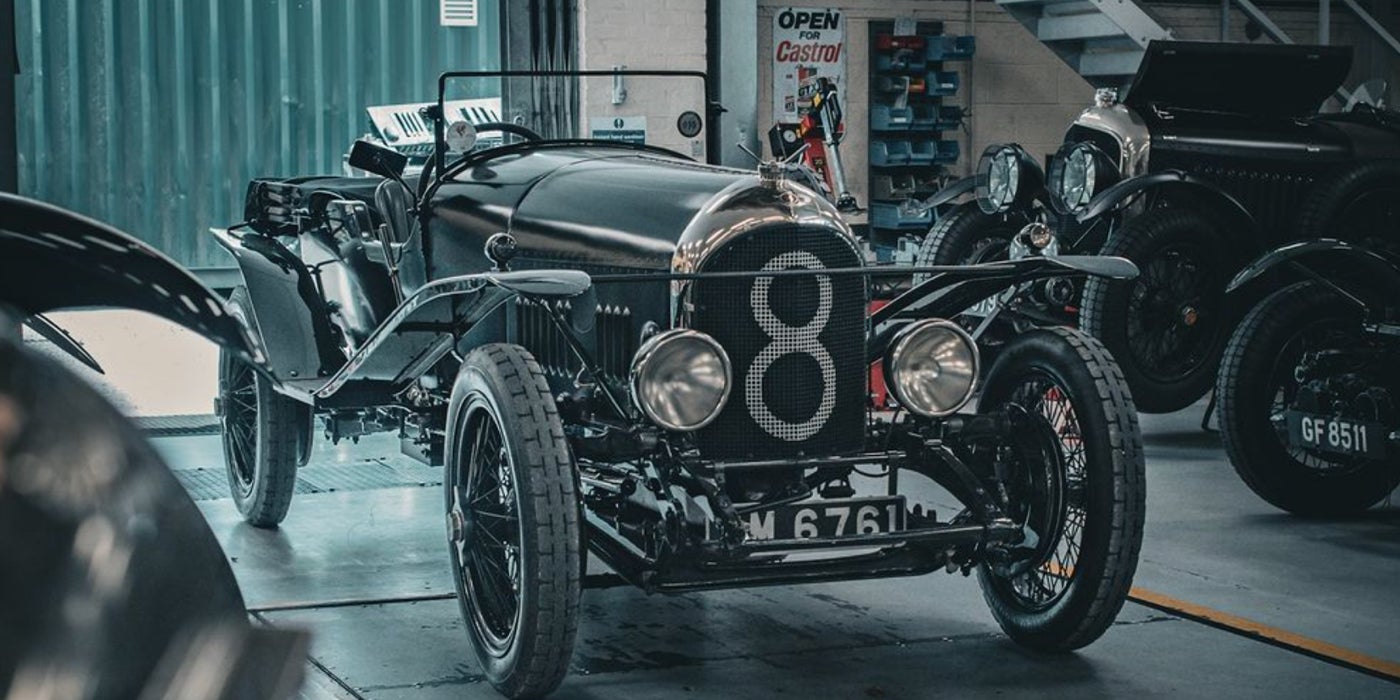
Ancient Grease
A new type of collector bypasses cool cars for the cool things used to fix themBring a Trailer, the popular car auction site, doesn’t just sell amazing cars. “Like it or not, every classic car is going to require tools at some point,” warns a page called “Parts and Automobilia – Tools.” Judging by a Porsche 959 tool kit from the late ’80s that recently fetched $22,000 (not bad for an unassuming leather roll filled with a handful of screwdrivers, wrenches, and spark plugs) there’s a new kind of collector out there: the luxury grease monkey.
What they’re after, if the 959 kit is any indication, isn’t just the ability to provide their own roadside assistance. The screwdrivers included here were gleaming examples from HAZET, handcrafted in Germany out of chrome and vanadium, a metal combination that is especially impervious to rust. There was also a set of spanners, things of beauty unto themselves. Made with that same blend of metals, they projected a heft that is somehow pleasing to behold. And that’s not accounting for the eye-hook bolt (for towing the vehicle), the pair of leather gloves, or the tool roll itself, which matches the 959’s metallic-grey leather interior.
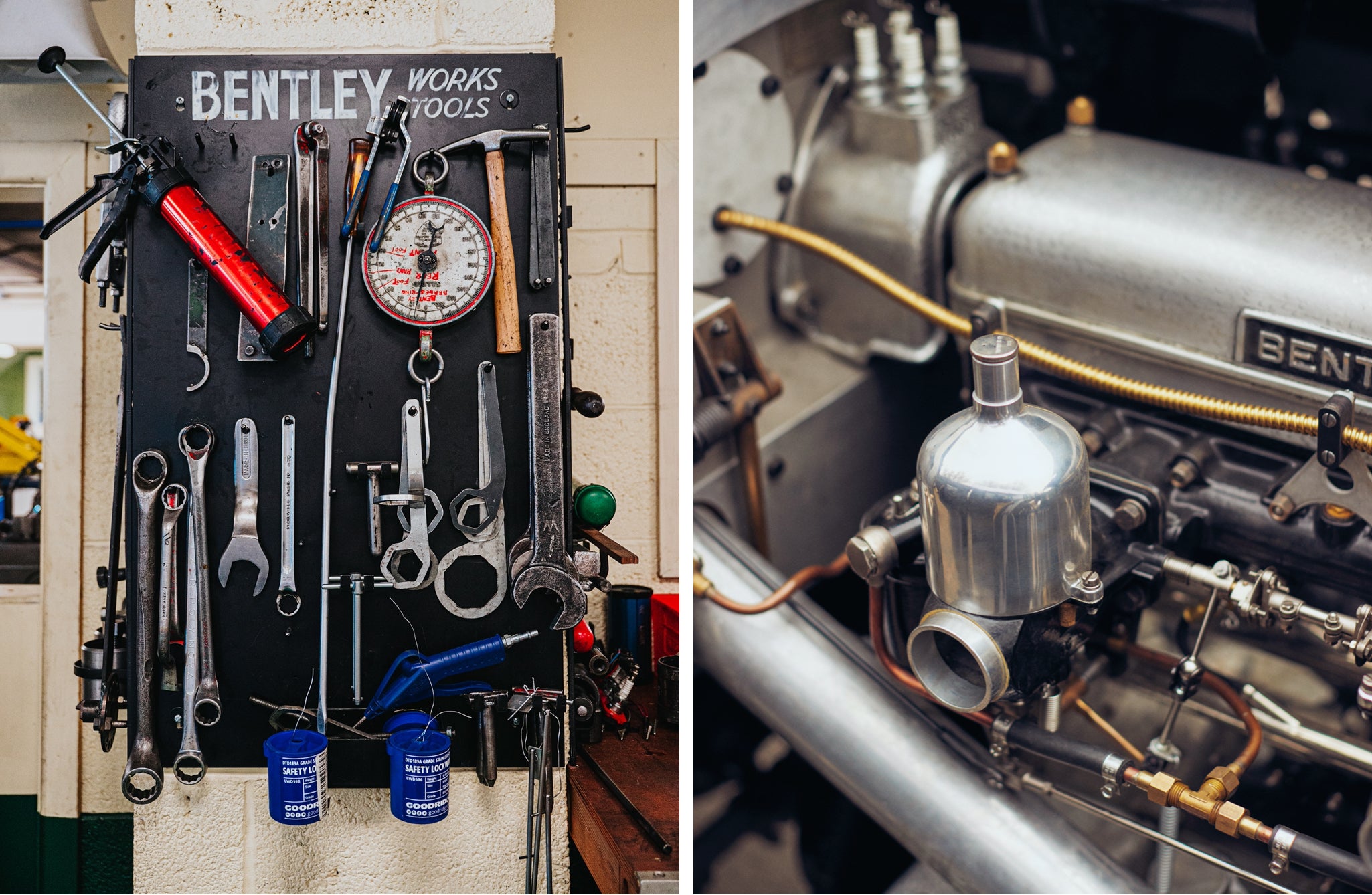
Inside the immaculate garage of Vintage Bentley, where the mechanics use only original tools or recreations made in-house. Is it ever challenging to find the exact thing needed? “Well, it’s only taken 28 years,” says William Medcalf, the founder
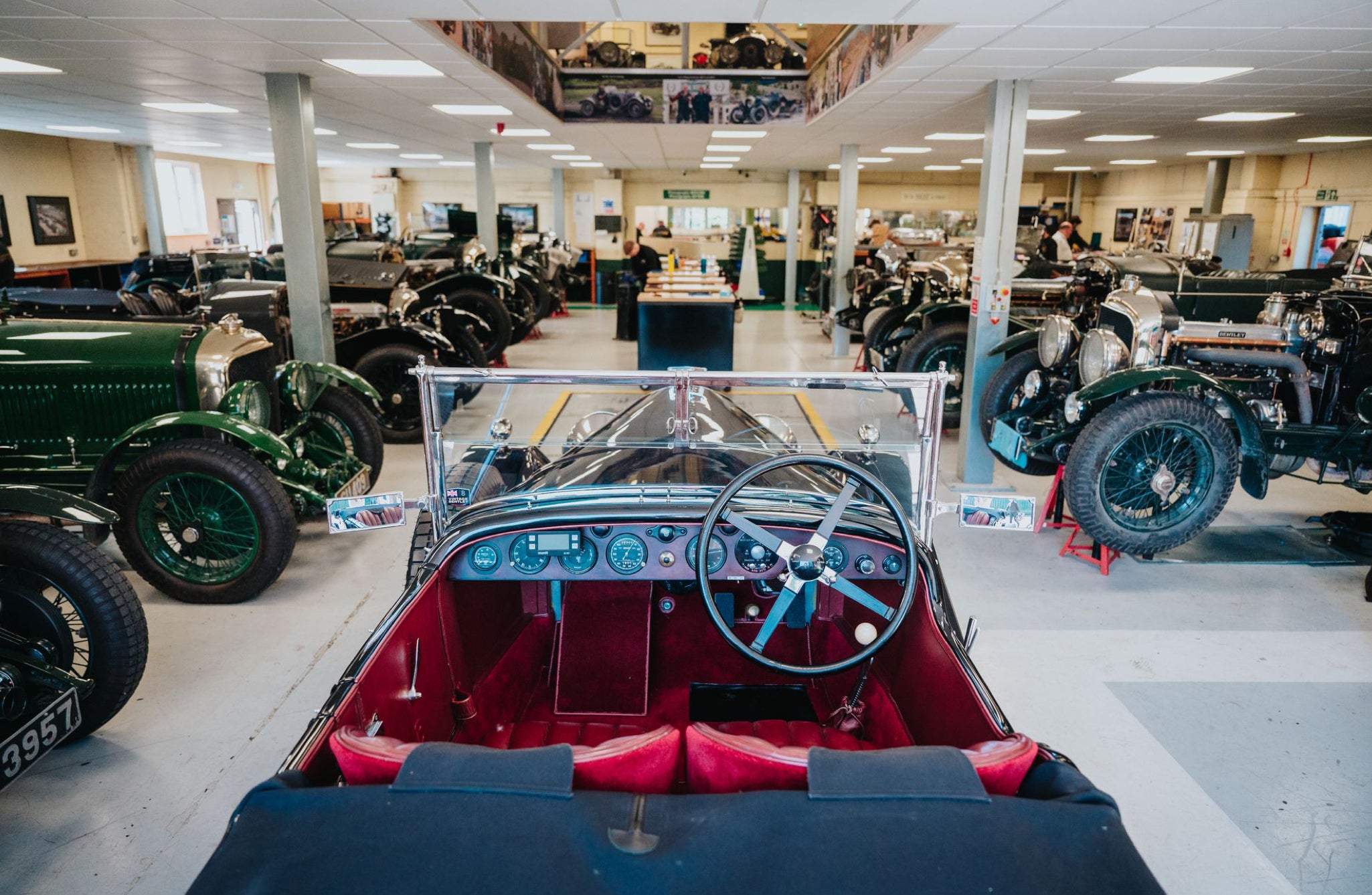
Inside the immaculate garage of Vintage Bentley, where the mechanics use only original tools or recreations made in-house. Is it ever challenging to find the exact thing needed? “Well, it’s only taken 28 years,” says William Medcalf, the founder
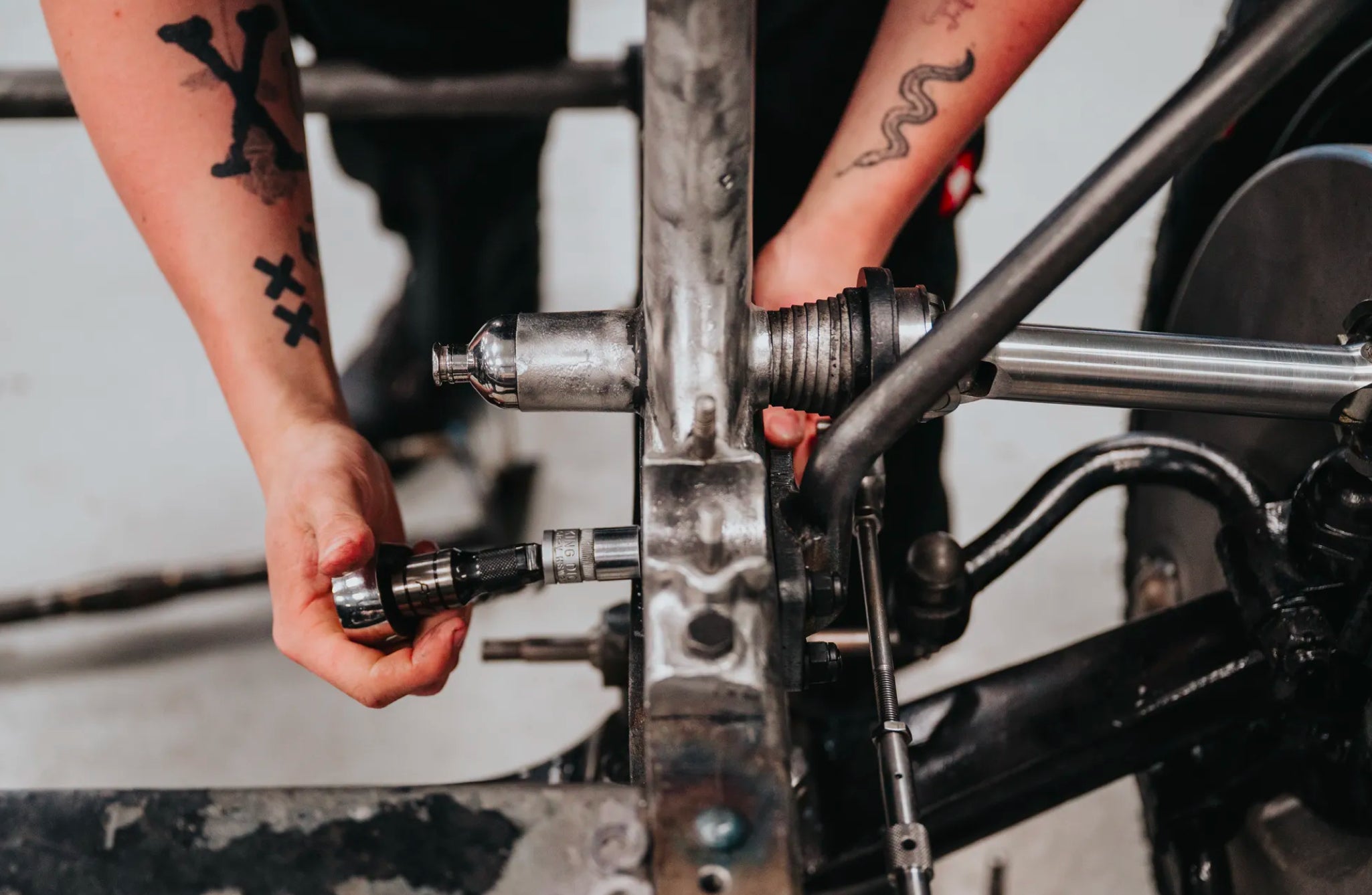
Inside the immaculate garage of Vintage Bentley, where the mechanics use only original tools or recreations made in-house. Is it ever challenging to find the exact thing needed? “Well, it’s only taken 28 years,” says William Medcalf, the founder
In other words, it’s as much about form as function (though each of the tools in the Porsche kit and other vintage sets found online promise the utmost in the latter). These are design objects that can be enjoyed on their own and help tell a particularly fascinating story, which is what collecting is really all about. It also signals good taste, an appreciation for luxury and craftsmanship, and an eye for beauty in the every-day. Seeing that an actual Porsche 959 recently fetched more than $2 million, taking home a set of tools is a (relatively) more accessible way to own a part of a storied car’s history.
Tools are their own interesting chapter in the library of automotive history. As you might imagine, the proliferation of the automobile at the turn of the 20th century brought about a corresponding rise in the need for the objects made to fix them, especially before there was a garage on every corner. For a time, cars came with their own special tools, some of which worked as specialty fasteners on hoods and trunks, according to Scott Gilbert, founder and lead designer of custom carmaker Blackbridge Motors. Car design had yet to be standardized, which meant that even if you could find a mechanic in the US, he might not know how to repair your particular ride, especially if it had been made in Europe where car making was more advanced. Hence, the rise of that obligatory character you meet in almost every prewar drama set in the English countryside: the chauffeur who doubles as grease monkey. But then came Henry Ford, whose assembly line produced cars that were both standardized and advanced. The trade of mechanic followed and with it came tools, more and more tools.
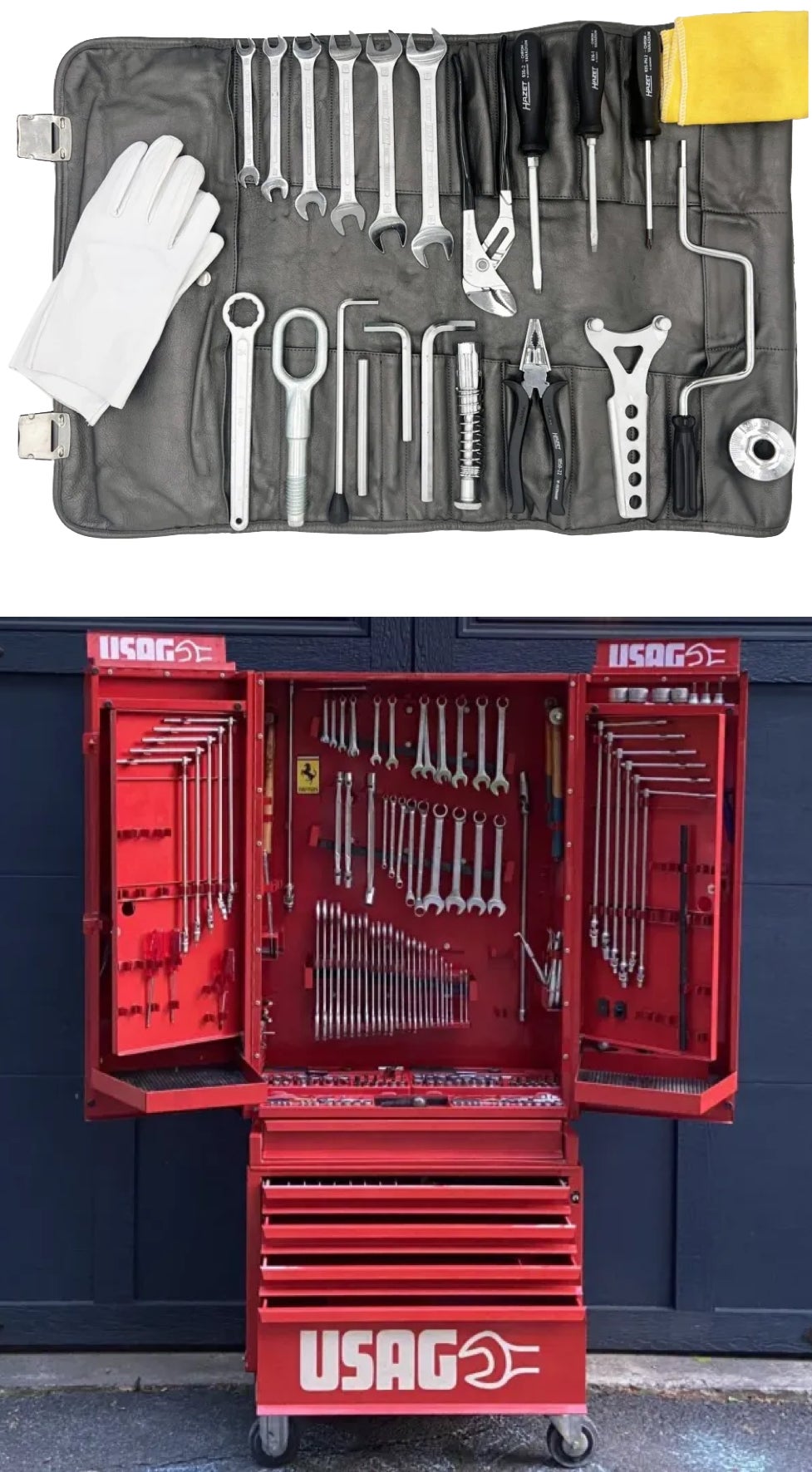
The Porsche 959 tool kit from the late ’80s, shown above, recently fetched $22,000 on Bring a Trailer. Tools are cool, but it’s the places people keep them that pack a big aesthetic impact, such as this rolling chest
Plenty of these are no longer with us. Gone are the stethoscopes once used to analyse a rattle in the engine, as are the electric vulcanizers once used to patch a tire. Even the repair manual itself has evolved. Early 20th–century mechanics consulted a five-volume reference book from the American Technical Society; today, of course, all you need is a PDF should you dare try to fix a current model car yourself. “It’s basically a computer on wheels,” Gilbert says, adding that the need for speciality tools, even for rarefied Ferraris and Porsches, is now close to nonexistent. Even owners of vintage cars, he adds, tend to prefer standardized equipment to eliminate what he calls “the hassle factor.”
That doesn’t mean some makes of tools aren’t more desirable than others. Take Snap-on, the Kenosha, Wisconsin–based tool company that remains the gold standard of the trade, renowned for its heritage and tradition of making tools that offer beauty and durability in equal measure. In 1920, the Milwaukee engineer Joseph Johnson created Snap-on with a quintet of spanners with interchangeable handles and sockets, and the promise that “five do the work of 50.” (In 1923, Snap-on patented the ratchet.)
Later tools added beeps or blinking lights to alert users that they had achieved the desired torque; today, the speed and precision of the Snap-on 3/8" air impact wrench reigns supreme. That said, even though they don’t look meaningfully different today than they did back then - if it’s from Snap-on, whose wares have been used everywhere from the Indy 500 race to the lunar surface (via NASA) - it will cost you a few hundred bucks more than the other options at your local hardware shop. (Or, if you’re so inclined, on eBay.)
William Medcalf, the founder and CEO of the British restorer Vintage Bentley, is one of those collectors who prizes vintage originality and authenticity. In his garage, the mechanics use either original tools or recreations made in-house, rather than what he calls “modern rubbish.”
To find what he’s after, he bypasses the Bring a Trailers of the world for what Brits call an “autojumble,” a second-hand parts sale. Is it ever challenging to find the exact thing he needs? “Well, it’s only taken 28 years,” he says, with only a mild trace of amusement. “Today, we have all the tools we need: hand tools, workshop tools, special tools, engine-building tools.” In other words, he has everything you’d need to fix up, say, an ornery 1929 Blower Bentley like Ralph’s, along with the tools to help manufacture new parts as needed.
“We hold all the tooling to make front axle beams, engine components, rear axles - some of it weighs tons,” he says. “And we use that to press parts and so on. Tooling can range from a small spanner to a three-ton block of steel where we’d make a front axle beam.”
If you happen to luck out and come into such a vehicle yourself, along with the tools made to go with it, Medcalf says that’s a rarity. “For 100 years, people have resold cars, but they retain the tools as some sort of trophy,” he says. “It’s a shame, but they get separated.”
Tools are cool, but it’s the places people keep them that pack a big aesthetic impact. You can spend a little - a trunk-style Trusco with a candy finish can be had for under a hundred dollars - or a lot: a newly issued, and Bauhaus-worthy, KRL EPIQ from Snap-on, with a roll cab, exquisite lacquer finishes, and a lifetime guarantee will set you back nearly $20,000. Hunting down the perfect vintage version likely won’t cost you as much (for example, a beautiful teal Masters Series box from the earlier “KR” era is listed for $3,695 on eBay; an Italian-made USAG chest snagged $13,250 on Bring a Trailer), but it will take time and effort, of course, particularly if you’re interested in the rarer colours outside Snap-on’s signature cherry red. And you might need to ship it one piece at a time, as the old Johnny Cash song goes.
Need inspiration? The gearheads at Vehicle Service Pros have been running their “Big-Time Boxes” series for decades. It features automotive technicians at their place of work, showing off their prized boxes, often customized and adorned with cool auto-world stickers. You can also check out CollectingSnapOn.com, a website replete with manuals going back a hundred years, detailed histories, and, crucially, an active forum where you can trade or acquire vintage pieces.
This particular site contains an admonition for budding collectors: Once you start, it can be hard to stop. The founder of CollectingSnapOn started in 2003 with an incomplete set of his father’s tools from the 1960s. He was jetlagged in Tokyo one day when he created the site at three in the morning. Twenty years later, it’s still growing - and so is his collection, which now spans three decades. If you’re not careful, tools meant to fix things can become their own fix.
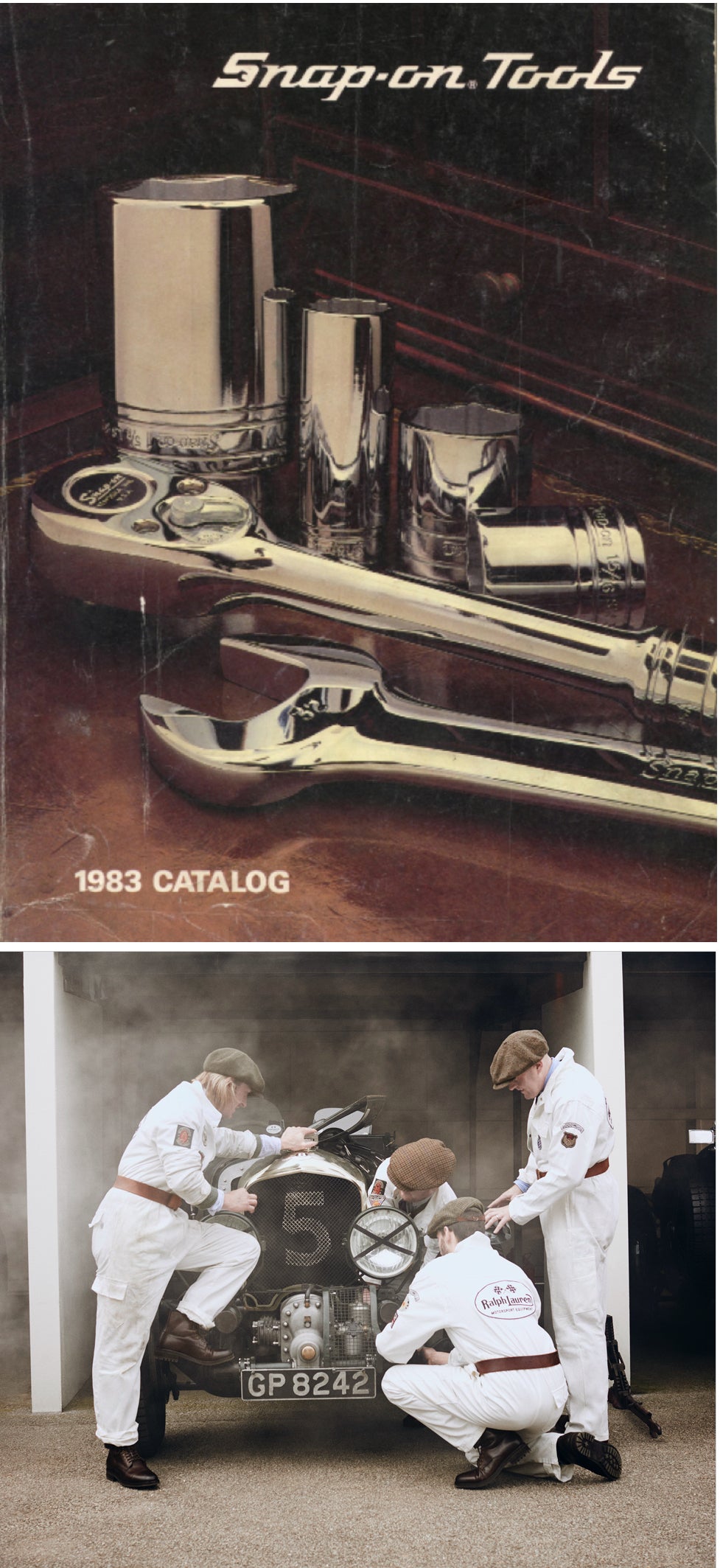
The cover of a catalogue from Snap-on, the Kenosha, Wisconsin–based tool company that remains the gold standard of the trade, renowned for its heritage and tradition of making tools that offer beauty and durability in equal measure; a team of mechanics takes a look
MORE FROM THE POLO GAZETTE
Speed Painters
The greatest of Grand Prix posters achieve the unimaginable feat of freezing a race car in motion. Through the decades, few artists have done it better than these, and though prices for their work are on the rise, it’s still a buyer’s market
By Paul L. Underwood







